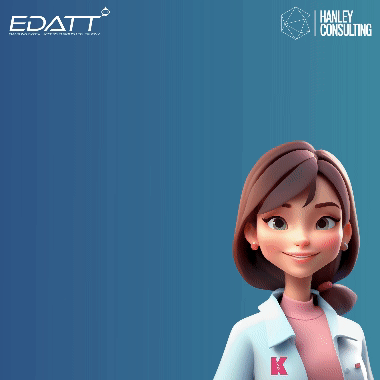Paul Charnley, Digital Lead for Cheshire and Merseyside Health and Care Partnership and a Co-Chair of the NHSX Blueprinting Steering Committee, delivered a live webcast for the HTN audience on why Blueprints are so important in helping NHS organisations to deliver digital capabilities.
Speaking to us in June, as part of of our HTN Now series, Paul began by sharing a short video to explain the purpose of NHSX’s Blueprinting Programme, which provides access to shared learning for staff across health and care.
In this video within a video, Paul himself says: “The benefits of investments in digital technologies are often difficult to achieve. Where people have been successful, it’s important to be able to pass that knowledge on, so that we replicate and disseminate the technologies to other parts of the system – avoiding the mistakes that have been made in the past.”
Dr James Reed, another Co-Chair of the NHSX Blueprinting Steering Committee, adds: “What you’ve got through some of the Blueprints is that you can quickly deploy something that’s been proven elsewhere with a tested methodology. It’s definitely very useful to see what others have done and pick up on the good practice, and to avoid some of the pitfalls that they’ve fallen into.
“I can’t think of anywhere else really, where you could look to bring together this body of structured knowledge in this way – that’s what’s really unique about this work. Even internationally, I can’t think of an equivalent to it. The fact that this is something we’ve built in the NHS for the benefit of other NHS organisations makes it unique.”
James explains in the video that you can use it for projects you’re already planning or undertaking, as well as to get ideas for new work. “There are some really quite interesting and innovative projects on there. Things that you might not have otherwise heard of,” he says.
The aims of the Blueprinting Programme, Paul summarised afterwards, are: “To help people disseminate information quickly on topics that are relevant to what they’re trying to achieve and, more recently, recognise that it is a part of the ‘What Good Looks Like’ framework guidance.”
On the question of what a Blueprint is, he answered: “A Blueprint – for those of you that may not be familiar with it – is clearly a knowledge asset. It’s meant to be structured enough to be useful on a diverse range of dimensions for different audiences. But it’s a product of a structured approach to learning, from projects that have taken place. It’s there to help people get to the benefits more quickly, and remove costly delays and problems that other people have already experienced and found ways around.”
“There is a very diverse group of projects already documented, using a capability app that we’ve developed with Atos, looking at the whole range of informatics and digital that’s applied to health and care – and there are plenty of gaps, but we’re completing that. It comes at it from various angles – clinical, patient – and looks to cover things like safety and quality,” he explained.
“[It’s] step-by-step guidance that can be used by another organisation – [it] maybe needs to adapt to the way that that organisation works, policies and procedures and operating models…but, generally speaking, picking up a project and then suiting it to the local needs is what a Blueprint is about…[there are] all sorts of useful components there that will help you stand on the shoulders of the people who have done the work already.”
The Blueprinting platform now has over 2,300 users and includes more than 170 full Blueprints and 2, 830 artefacts, while it also contains all the tools and templates needed for people to create their own.
According to Paul, the Blueprinting Programme began as part of the GDE [Global Digital Exemplar] and they are currently picking up with Digital Aspirant Programme, which is funding 60 trusts and asking them to develop Blueprints for the work they have ahead of them. The programme has been in touch with around 30 of those so far and 12 Blueprints have been given the go-ahead.
Martin Wilson and David Hush of Rotherham, Doncaster and South Humber NHS Foundation Trust, and Justin Griffiths of the Walton Centre NHS Foundation Trust, also joined the webinar to explain their experiences of Blueprinting through the Digital Aspirant Programme.
After detailing their processes, Martin said it “gives other trusts a starting point”, while David added that co-production “really helped bring a common language” for the project across technical and clinical teams, bringing a common ground and something “all can understand”.
Justin then jumped in to contribute his experiences too, commenting: “For us the Blueprinting platform has already started to give me a rich resource into our new digital strategy…it’s an amazing pool there that we all should be jumping into.”
The presentation then concluded with another short video highlighting the Blueprint library, its ‘bitesize’ stories, video content and testimonies.
To find out more, email blueprinting@nhsx.nhs.uk.
Watch the full session here:




